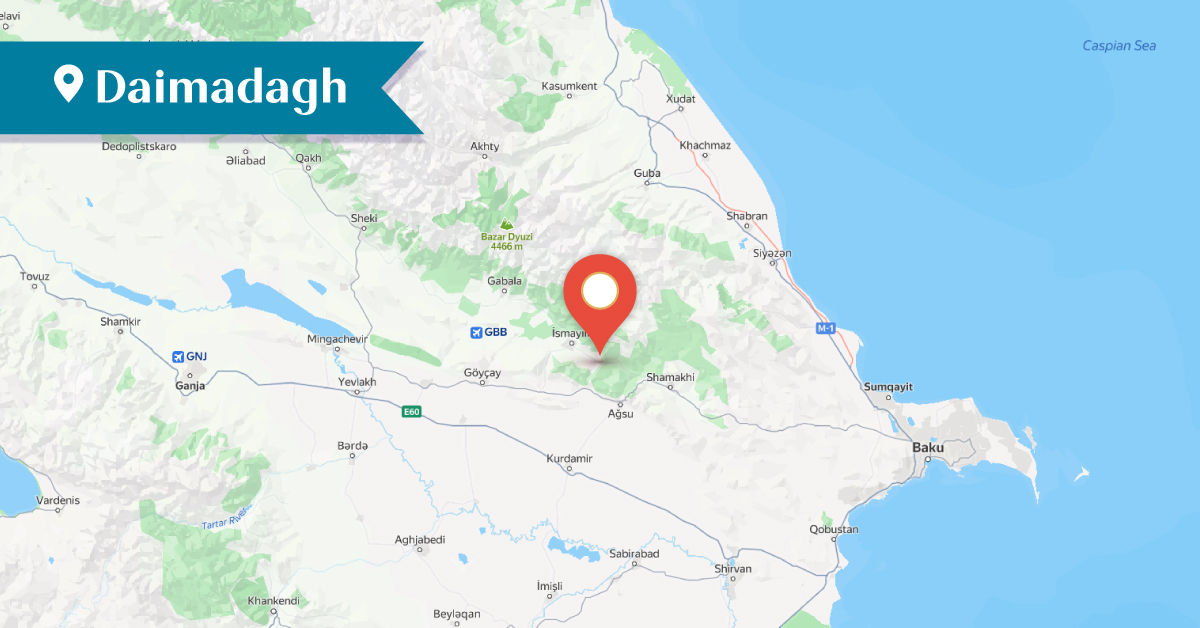2025
2025
2025-07-21

The Armenian village of Daymadagh was located in Eastern Transcaucasia, within the historical territory of Caucasian Albania. The village site is situated approximately 12 kilometers southeast of the present-day Ismayilli regional center.
The settlement was most likely founded in the early 19th century. The residents of Daymadagh had relocated there from the Armenian village of Mshkapat in Artsakh. Later, in the 1870s, the villagers moved to a nearby area and established a new settlement with the same name.
The population of this Armenian village was small. In 1831, the village had 21 households with 118 Armenian residents. By 1890, the population was 65, and in 1912, it had reached 106 inhabitants.
Due to its small population, the village did not have its own church. The Armenian Christian residents of Daymadagh attended churches in neighboring Armenian villages. In the 1840s–1850s, religious services in Daymadagh were conducted by Father Hovhannes Aleksanyan Ter-Martirosyants from the village of Rushan and Priest Zakaria Petrosyan Ter-Nersisyants from the village of Girk.
The events that unfolded in Eastern Transcaucasia in 1918 were fatal for the Armenian population of the village. During their campaign toward the Baku province and the city of Baku, Ottoman troops—joined by local Turkic-Tatar forces—raided Armenian settlements. Under such conditions, the residents of Daymadagh were forced in 1918 to join the armed forces of the Baku Commune and the Armenian National Council of Baku, who were retreating toward the city of Baku while fighting against the Turkic-Tatar forces. Taking advantage of the situation, residents of neighboring Turkic villages looted and plundered Daymadagh. After the establishment of Soviet rule in Azerbaijan in 1920, the former residents did not return to the abandoned village.
During Samvel Karapetyan’s visit in 1985, traces of the houses of Daymadagh were still preserved, and in the ruined cemetery, fragments of broken Armenian tombstones could still be found.
Bibliography
Karapetyan, S., Aghvank Proper, Part 1, Yerevan, 2024, pp. 130-131.
Mesrop Archbishop Smbatyants. Description of the Monastery of Saint Stepanos of Salian and Other Monasteries and Sacred Sites in the Towns and Villages of the Shamakhi Diocese. Tiflis, 1896.